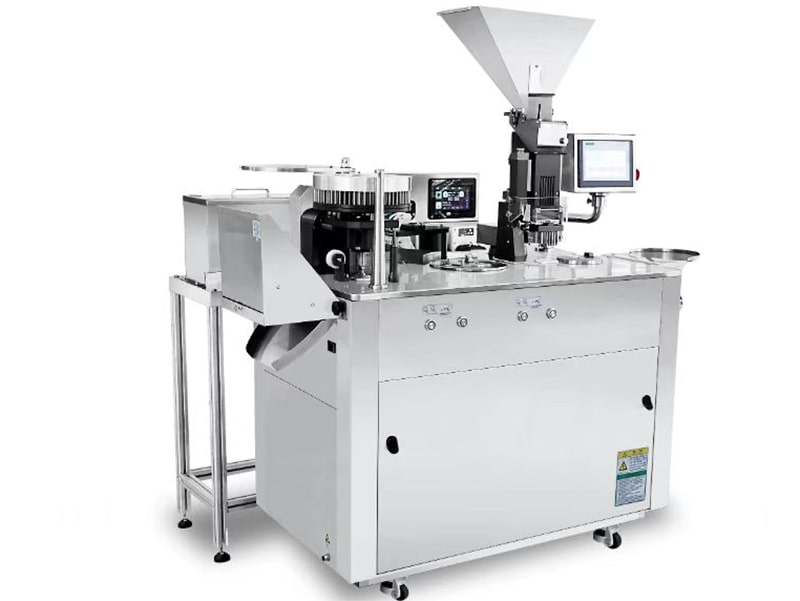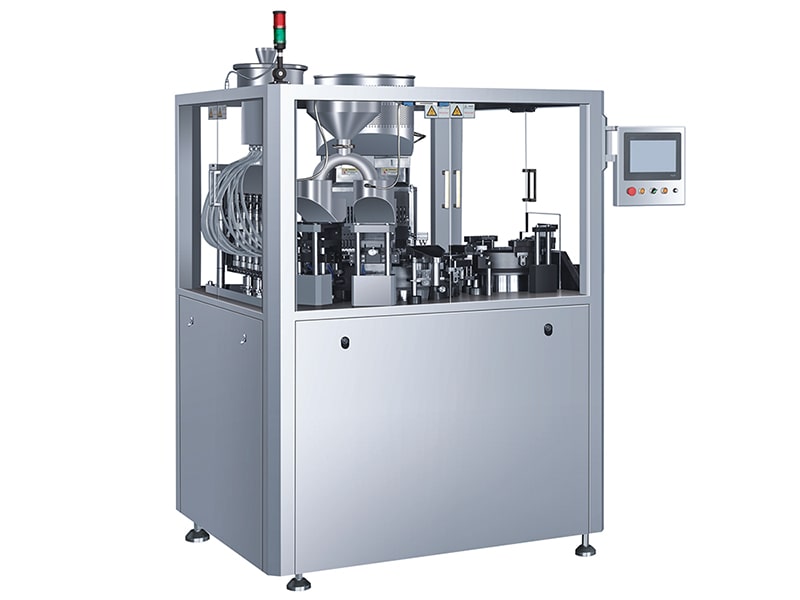In the pharmaceutical, nutraceutical, and dietary supplement industries, encapsulated products are ubiquitous, offering consumers a convenient and precisely dosed delivery system. The heart of their production lies in the capsule filling production line – a sophisticated assembly of machinery designed for efficient, accurate, and reliable filling of empty capsules with powder, granules, pellets, or liquids. Understanding the specific equipment needed for a fully functional and optimized capsule filling production line is crucial for manufacturers aiming to scale production, maintain quality control, and meet increasing market demands.
If you are setting up a capsule filling production line, understanding the essential equipment involved is crucial. This guide will explore the key machinery required, their functions, and how they contribute to a seamless manufacturing process.

Key Equipment in a Capsule Filling Production Line
1. Capsule Filling Machine: The Core of the Operation
The capsule filling machine is the central component of the entire production line, responsible for accurately dispensing the designated fill material into the empty capsule bodies and subsequently closing the capsules securely. These machines vary significantly in their automation level, capacity, and the type of filling technology employed.
● Manual Capsule Filling Machines: These are typically small-scale, hand-operated devices suitable for research and development, pilot production, or very small batch sizes. While offering minimal automation, they are inexpensive and versatile for working with diverse formulations. However, they are labor-intensive and susceptible to operator error, making them unsuitable for large-scale production.
● Semi-Automatic Capsule Filling Machines: These machines offer a degree of automation, reducing the manual labor involved in the filling process. They typically require an operator to load capsules and initiate the filling cycle, but the actual dispensing and capsule closing are automated. They offer a good balance between cost and efficiency for medium-sized production runs.
 |
| Semi-automatic liquid capsule filling machine |
● Automatic Capsule Filling Machines: These represent the pinnacle of automation in capsule filling. They are fully automated, from capsule feeding and orientation to filling, closing, and ejection. These machines are capable of high-speed, high-volume production with minimal operator intervention. They employ sophisticated control systems to ensure accurate dosing, consistent filling, and reliable operation. Automatic capsule filling machines come in various types, each employing a different filling mechanism:
○ Dosing Disc (Tamping Pin) Systems: These systems use a rotating dosing disc with precisely calibrated cavities. The disc rotates, filling the cavities with the product, and then tamping pins compress the powder to achieve a consistent density before dispensing it into the capsule body. This method is suitable for a wide range of powders and granules.
○ Auger Filling Systems: These systems utilize a rotating auger (screw) to meter the product. The speed and pitch of the auger control the amount of material dispensed. Auger filling is particularly well-suited for cohesive powders and materials that tend to bridge.
○ Vacuum Filling Systems: These systems employ vacuum pressure to draw the product into the capsule body. They are particularly effective for filling capsules with materials that are difficult to handle or tend to stick together.
○ Liquid Filling Systems: Specialized capsule filling machines are designed for filling capsules with liquids or semi-solids. These systems often employ positive displacement pumps or peristaltic pumps to accurately meter the liquid.
 |
| Automatic-capsule-liquid-filling-machine-NY-100 |
Selecting the right capsule filling machine depends on several factors, including the required production volume, the characteristics of the fill material (powder, granules, pellets, or liquid), the desired level of automation, and the available budget. It is essential to carefully evaluate the machine’s accuracy, reliability, ease of cleaning, and changeover time for different capsule sizes.
2. Capsule Polishing Machine
After filling, capsules may have residual powder or minor imperfections. A capsule polishing machine removes excess powder and ensures a smooth, professional finish. This step enhances product appearance and prevents contamination.
3. Capsule Counting and Sorting Machine
To maintain accuracy in packaging, a capsule counting machine ensures the correct number of capsules per bottle or blister pack. Some advanced models also include sorting capabilities to detect and remove defective capsules.
4. Capsule Printing Machine
For branding and regulatory compliance, a capsule printing machine imprints logos, dosage information, or batch numbers onto capsules. This is essential for traceability and consumer safety.
5. Capsule Sealing Machine (for Liquid or Semi-Solid Fills)
If producing liquid or semi-solid-filled capsules, a capsule sealing machine is necessary to prevent leakage. This equipment ensures airtight sealing for product integrity.
6. Dust Extraction System
Powder handling generates dust, which can affect worker safety and product quality. A dust extraction system maintains a clean production environment by filtering airborne particles.
7. Weighing and Mixing Equipment
Before filling, raw materials must be accurately weighed and blended. A powder mixer ensures uniform distribution of active ingredients, while precision scales guarantee correct dosages.
8. Inspection and Metal Detection Systems
Quality control is critical in pharmaceutical manufacturing. Vision inspection systems and metal detectors identify and reject capsules with defects or foreign contaminants.
9. Packaging Equipment
The final step involves packaging filled capsules into bottles, blister packs, or bulk containers. Common packaging machines include:
● Bottle Filling and Capping Machines
● Blister Packaging Machines
● Cartoning Machines
Choosing the Right Equipment for Your Production Needs
Key Considerations for Equipment Selection:
When selecting equipment for a capsule filling production line, several factors should be considered:
● Production Volume: The required production volume will dictate the size and automation level of the equipment.
● Fill Material: The characteristics of the fill material (powder, granules, pellets, or liquid) will influence the type of filling technology required.
● Capsule Size and Type: The equipment must be compatible with the capsule size and type being used.
● Accuracy and Precision: The equipment must be capable of accurately and precisely filling capsules to meet regulatory requirements.
● Reliability and Durability: The equipment should be reliable and durable, minimizing downtime and maintenance costs.
● Ease of Cleaning and Maintenance: The equipment should be easy to clean and maintain to prevent contamination and prolong its lifespan.
● Regulatory Compliance: The equipment must comply with all applicable regulatory requirements.
● Budget: The available budget will influence the type and quality of equipment that can be purchased.
Conclusion
A well-equipped capsule filling production line requires multiple machines working in harmony to ensure efficiency, accuracy, and compliance. From filling and polishing to counting and packaging, each piece of equipment plays a vital role in delivering high-quality capsules.
At SFXB, we specialize in manufacturing advanced capsule filling and packaging machinery. Our solutions are designed for pharmaceutical, nutraceutical, and supplement manufacturers seeking reliable, high-performance equipment.
For more details on our capsule filling production line solutions, visit our website or contact our sales team today!
| References: |
| 1.ISO 15378:2017/Amd 1:2024<Primary packaging materials for medicinal products — Particular requirements for the application of ISO 9001:2015, with reference to good manufacturing practice (GMP)> |
| 2.FDA Guidance for Industry: Container and Closure Integrity Testing |
| 3.《Pharmaceutical Technology》- Advances in Capsule Filling Automation |






Comments